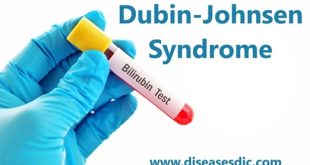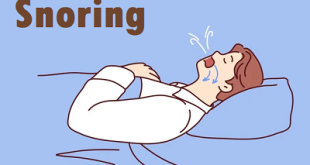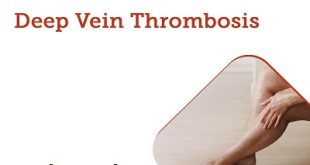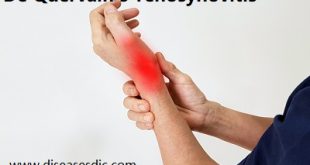Delayed sleep phase disorder – Definition
Delayed sleep phase disorder (DSPD) belongs to a group of sleep disorders known as circadian rhythm sleep disorders whereby individuals experience a chronic pattern of sleep disturbance due to changes or misalignment in the circadian timing of their sleep, relative to their social and physical environment dictate. It is this conflict that leads to the expression of a problem. For example, an individual whose circadian rhythm, or ‘body clock’, is delayed may find that their ideal time for sleep is 4 am with a rise time of 12 noon. This schedule does not match the typical sleep window of most adults, and thus the main problems of those with DSPD relate to attempting to fall asleep (before their body clock is ready to) and attempting to wake up in the morning (before their body clock is ready to). The latter can be an important problem if the individual has to commence work at 8 or 9 am, rendering them partial sleep deprivation.
Circadian rhythm sleep disorders in general, lead to excessive daytime sleepiness as well as periods of insomnia, due to the shift in the natural, circadian timing of an individual’s sleep window. DSPD in particular tends to describe sleep-wake schedules which are delayed by two or more hours from the ‘normal’ so, for example, if an individual found themselves becoming sleepy at 4 am and waking naturally at 12 noon. Other than this offset, DSPD does not cause ‘abnormal sleep’ and tends to follow a reliable pattern over a 7 day period.
Normal sleep phase and variations
Epidemiology
DSPD has been reported as young as preadolescence and beyond sixty years of age. Although the actual prevalence of DSPD in the general population is not well characterized, evidence from one population-based study indicates a prevalence of 0.17%. DSPD is reported to be more common in adolescents and young adults, with a reported prevalence of 7%, while in middle-aged adults, the prevalence may be one-tenth of that or 0.7%. In a sleep disorders clinic, 6.7%34 to 16% of patients seen for a primary complaint of insomnia were determined to have DSPD. There are no known gender differences in prevalence.
Types of delayed sleep phase disorder
There are two types of DSPD. These are characterized by the onset of melatonin, the sleep hormone:
- Circadian Aligned DSPD: Melatonin onset occurs less than three hours before sleep onset.
- Circadian Misaligned DSPD: Melatonin onset occurs more than three hours before bedtime, or melatonin onset doesn’t occur until after sleep onset.
Risk factors of Delayed sleep phase disorder
- The exact reason for the onset of the disorder is unknown, but the American Sleep Association says DSPS affects about 15 percent of all teens and adults. Researchers believe that DSPS may be due in part to the shift that occurs in your internal clock after puberty, though it also can occur in adulthood.
- According to the ASA, you’re more likely to develop DSPS if someone in your family has it. You’re also at a higher risk if you don’t get enough sun during the day or are exposed to too much light in the evening.
Delayed sleep phase disorder causes
Common causes of circadian rhythm sleep disorders include:
- Irregular sleep schedule
- Being confined to bed for an extended period
- Lack of exposure to light
- Jet lag
- Damage to the brain, such as from injury, stroke, or degenerative disease
However, the exact cause of delayed sleep-wake phase syndrome is still unclear. Some experts hypothesize that people with DSPD have longer circadian periods than average. A longer circadian period means that you won’t have the same biological drive to fall asleep at the same time as the average person. Alternatively, people with DSPD struggle to advance normally through the day because they miss a key window of alertness when waking later. Other theories suggest sensitivity to light at night or irregularities in the sleep regulatory system.
Symptoms of delayed sleep phase disorder
DSPD can wreak havoc on a person’s life. Here are the main signs:
- Inability to fall asleep at a “decent” hour, followed by an inability to wake up at a “decent” hour.
- Excessive daytime sleepiness due to sleep deprivation; most people with DSPS rarely, if ever, get their full 8 hours of sleep at night because of morning schedules.
- Depression-like symptoms; as many as half of all people with DSPD suffer from depression.
- Problems with attention and focus during the day.
- Chronic fatigue.
- Dependence on caffeine or other stimulants during the day and sedatives or alcohol at night.
- A notable increase in accidents at work, at home, in the car, and general clumsiness.
Diagnosis and test
There appear to be three main criteria for officially diagnosing delayed sleep phase disorder:
- The patient has chronic difficulty falling asleep at the desired time to meet their daily schedules – work, school, etc. Typically patient reports an inability to sleep before 2 to 6 am.
- The patient reports having dealt with these symptoms for at least six months, mostly for multiple years.
- When not required to maintain their schedule–i.e. weekends, holidays, etc.–the patient sleeps without difficulty and will awaken spontaneously after a sleep period of normal length.
Although these are the criteria for officially diagnosing, obviously a delayed sleep phase can be present in individuals for a period of less than 6 months and still have a profound effect.
Treatment and prevention
Treatment for delayed sleep phase disorder involves the following:
Good sleep habits
Children and adolescents with DSPD need to do everything they can to develop and maintain good sleep habits and a consistent sleep schedule. Habits should include going to bed and waking up at the same times including on weekends and vacations; avoiding caffeinated products (coffees, teas, colas, some non-cola pops, energy drinks, chocolates, and some medications [Excedrin®]); avoiding other stimulants and products that can disrupt sleep (alcohol, sleeping pills, nicotine); maintaining a cool, quiet and comfortable bedroom; and avoiding activities before bedtime that are stimulating (computer games, smartphone, television use).
Shifting the bedtime schedule
Treatment for DSPD can involve one of two methods: advancing or delaying the internal clock.
- Advancing the internal clock: This method simply moves the bedtime a bit earlier on each successive night until the desired bedtime is reached. For example, setting the bedtime at midnight on one night, 11:45 p.m. on the next night, 11:30 on the following night and so on.
- Delaying the internal clock: This method moves the bedtime sequentially 1 to 3 or more hours later on successive nights until the desired bedtime is reached. This requires several days free from social activities and maybe best attempted during a long school break or vacation period. The thinking behind this strategy is that it is much easier for the body to adjust to a later bedtime than an earlier one.
Staying motivated to stick with the schedule
It is especially important not to lose sight of the goals during holidays and weekends. Adhering to strict bed and wake times keeps the body’s internal clock under control but does not “cure” the tendency toward a delayed sleep-wake phase. Once the desired bedtime is reached, your child or adolescent must stay motivated and stick with going to bed at the desired bedtime on a nightly basis in order to reset the internal clock. Only after several months of sticking to the schedule can there be some flexibility allowed on special occasions.
Bright light therapy
Some physicians recommend bright light therapy, which requires the purchase of a special lightbox. Exposing your child to bright light for approximately half an hour in the morning helps to reset the body’s internal clock. Reduced exposure to bright light in the evening also helps. Your sleep doctor will be able to suggest commercially available lightboxes.
Melatonin supplements
Melatonin is a hormone produced in the brain that controls your body’s sleep and wake functions. The body produces more at night and the amount produced is also affected by our exposure to light. Melatonin supplements are often prescribed for insomnia or DPSD and in some cases to counter jetlag.
Medications
Melatonin or other natural sleep-inducing drugs are other options some physicians may try.
 Diseases Treatments Dictionary This is complete solution to read all diseases treatments Which covers Prevention, Causes, Symptoms, Medical Terms, Drugs, Prescription, Natural Remedies with cures and Treatments. Most of the common diseases were listed in names, split with categories.
Diseases Treatments Dictionary This is complete solution to read all diseases treatments Which covers Prevention, Causes, Symptoms, Medical Terms, Drugs, Prescription, Natural Remedies with cures and Treatments. Most of the common diseases were listed in names, split with categories.







